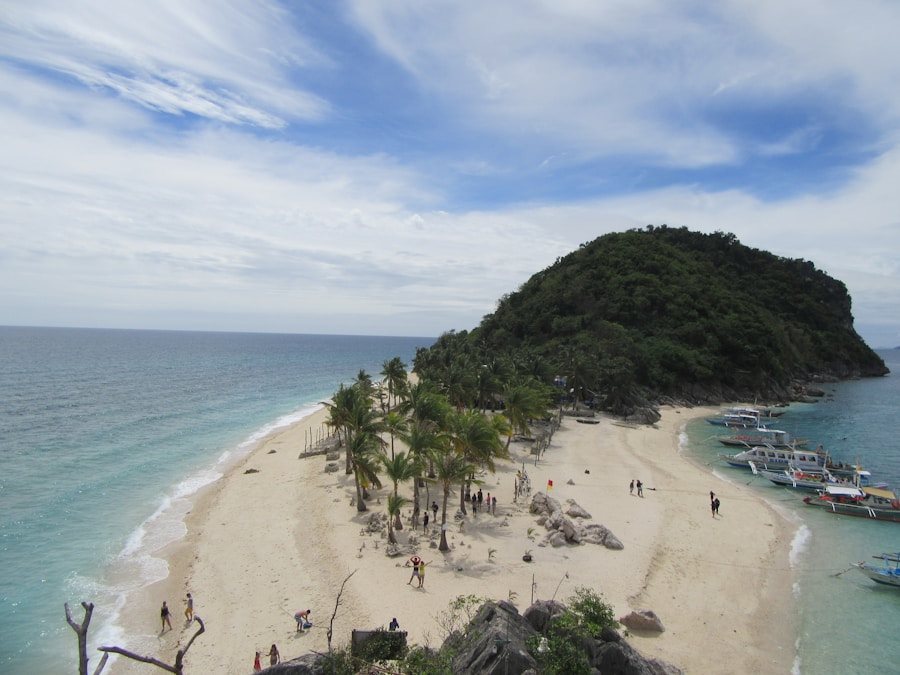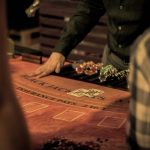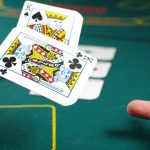Rediscovering Paradise: Boracay’s Timeless Beauty
Description
Boracay, a small island in the Philippines, has undergone a remarkable transformation over the decades. Initially, it was a hidden gem known primarily to local fishermen and a few adventurous travelers. The island’s pristine beaches and lush landscapes were largely untouched, offering a serene escape from the hustle and bustle of urban life.
In the 1970s, Boracay began to attract attention from international tourists, particularly backpackers seeking an idyllic paradise.
As tourism flourished, Boracay experienced rapid development.
The influx of visitors led to the establishment of numerous resorts, restaurants, and entertainment venues. While this growth brought economic benefits to the local community, it also resulted in significant environmental degradation. Overcrowding, waste management issues, and the destruction of natural habitats became pressing concerns.
By the early 2000s, Boracay was grappling with the consequences of its own popularity, prompting calls for sustainable practices and conservation efforts to preserve its natural beauty.
Key Takeaways
- Boracay has undergone a significant transformation from a quiet, unspoiled island to a bustling tourist destination.
- Environmental rehabilitation efforts have been implemented to restore Boracay’s natural beauty and protect its delicate ecosystem.
- Boracay’s timeless appeal lies in its pristine beaches and crystal-clear waters, making it a popular destination for travelers seeking natural beauty.
- Visitors can also explore Boracay’s local culture and traditions, providing a deeper understanding of the island’s heritage.
- Sustainable tourism practices are crucial in balancing development and conservation efforts to preserve Boracay’s beauty for future generations.
The Environmental Rehabilitation Efforts: Restoring Boracay’s Natural Splendor
Comprehensive Rehabilitation Efforts
During the closure, authorities implemented a comprehensive plan that included improving waste management systems, restoring mangroves, and rehabilitating coral reefs. One of the most significant aspects of the rehabilitation efforts was the enforcement of stricter regulations on businesses operating on the island. Establishments were required to comply with environmental standards, including proper waste disposal and sewage treatment.
Education and Responsible Tourism
The government also initiated a campaign to educate both locals and tourists about responsible tourism practices. This included promoting eco-friendly activities such as snorkeling and diving in designated areas to protect marine life.
Positive Results and Ecological Recovery
The results of these efforts have been promising; water quality has improved significantly, and many areas of the island have begun to show signs of ecological recovery.
The Timeless Appeal of Boracay: Exploring Its Pristine Beaches and Crystal-clear Waters

Boracay’s allure lies primarily in its breathtaking beaches and crystal-clear waters. White Beach, stretching over four kilometers, is often regarded as the crown jewel of the island. Its powdery white sand, formed from finely crushed coral, is soft underfoot and remains cool even under the blazing sun.
The beach is divided into several stations, each offering a unique atmosphere—from vibrant nightlife at Station 2 to tranquil relaxation at Station 1. Visitors can indulge in various water sports such as kite surfing, paddleboarding, and parasailing, all while surrounded by stunning views of the horizon. Beyond White Beach, Boracay boasts numerous hidden coves and secluded spots waiting to be explored.
Puka Shell Beach, located on the northern tip of the island, is known for its unique puka shells scattered along the shore. This beach offers a more laid-back vibe compared to White Beach and is perfect for those seeking solitude amidst nature. Additionally, the island’s vibrant marine life can be experienced through snorkeling and diving excursions at sites like Crocodile Island and Yapak Beach.
These underwater adventures reveal a kaleidoscope of colorful corals and diverse marine species, further enhancing Boracay’s reputation as a tropical paradise.
Rediscovering Boracay’s Local Culture and Traditions
| Local Culture and Traditions | Metrics |
|---|---|
| Number of traditional cultural events | 15 |
| Local artisans involved | 25 |
| Participation of community members | 500 |
| Revenue generated for local crafts | 10,000 |
While Boracay is often celebrated for its natural beauty, it is equally rich in culture and traditions that reflect the heritage of its local communities. The island is home to the Ati people, an indigenous group whose history predates the arrival of Spanish colonizers in the 16th century. The Ati Festival, held annually in January, showcases traditional dances, music, and crafts that celebrate their rich cultural heritage.
This vibrant event not only honors the Ati people’s contributions but also fosters a sense of community among residents and visitors alike. Local cuisine is another integral aspect of Boracay’s culture. The island offers a diverse array of culinary delights that highlight fresh seafood and traditional Filipino flavors.
Dishes such as grilled fish, adobo, and kinilaw (a type of ceviche) can be found in local eateries and upscale restaurants alike. Street food vendors also contribute to the culinary landscape with offerings like fish balls and halo-halo—a popular dessert made with shaved ice and various sweet ingredients. Engaging with local culture through food provides visitors with a deeper understanding of Boracay’s identity beyond its picturesque beaches.
Sustainable Tourism in Boracay: Balancing Development and Conservation
The challenge of balancing tourism development with environmental conservation has become increasingly important in Boracay’s ongoing narrative. As one of the Philippines’ most popular tourist destinations, the island faces pressure to accommodate growing visitor numbers while safeguarding its natural resources. Sustainable tourism practices have emerged as a solution to this dilemma, emphasizing responsible travel that benefits both the environment and local communities.
Efforts to promote sustainable tourism in Boracay include initiatives aimed at reducing plastic waste and encouraging eco-friendly accommodations. Many resorts have adopted practices such as using biodegradable materials and implementing water conservation measures. Additionally, local organizations are working to raise awareness about marine conservation through educational programs that inform tourists about responsible snorkeling and diving practices.
By fostering a culture of sustainability among visitors and residents alike, Boracay aims to create a harmonious relationship between tourism and environmental stewardship.
The Future of Boracay: Preserving Its Timeless Beauty for Generations to Come

Sustainable Development and Environmental Monitoring
Ongoing monitoring of environmental conditions will be essential to ensure that rehabilitation efforts remain effective and that any new developments adhere to sustainable practices.
Community Engagement and Partnerships
Community involvement will play a crucial role in shaping Boracay’s trajectory. Engaging local residents in decision-making processes regarding tourism development can help ensure that their voices are heard and their needs are met. Furthermore, fostering partnerships between government agencies, non-profit organizations, and private businesses can facilitate collaborative efforts toward sustainable practices that benefit both the environment and local communities.
A Balanced Approach to Tourism and Heritage
As Boracay continues to evolve, it remains imperative to strike a balance between preserving its timeless beauty and embracing responsible tourism practices that honor its rich cultural heritage. By prioritizing sustainability and community engagement, Boracay can secure its status as a beloved destination for generations to come while safeguarding the natural wonders that make it truly unique.
If you’re looking to level up your fun while on vacation in Boracay, why not try playing some online games with TG777? In a related article, “Level Up Your Fun with TG777 Online Games”, you can learn more about how to unleash the fun with TG777’s wide selection of online games. Whether you’re relaxing on the beach or taking a break from exploring the island, TG777’s online games are sure to keep you entertained.
FAQs
What is Boracay?
Boracay is a small island in the Philippines known for its beautiful white sand beaches and crystal-clear waters. It is a popular tourist destination for its stunning natural beauty and vibrant nightlife.
What are the popular activities in Boracay?
Some popular activities in Boracay include swimming, snorkeling, scuba diving, kite surfing, and island hopping. The island also offers a variety of restaurants, bars, and shops for visitors to enjoy.
When is the best time to visit Boracay?
The best time to visit Boracay is during the dry season, which typically runs from November to April. During this time, the weather is sunny and the waters are calm, making it ideal for beach activities.
How do I get to Boracay?
Visitors can fly into either Kalibo International Airport or Caticlan Airport, and then take a boat to Boracay. There are also direct flights to Caticlan from Manila and other major cities in the Philippines.
Are there any environmental regulations in Boracay?
In 2018, Boracay underwent a six-month closure for environmental rehabilitation. Since then, the island has implemented strict regulations to protect its natural resources, including limits on the number of visitors and the banning of certain activities.
What are the accommodations like in Boracay?
Boracay offers a wide range of accommodations, from luxury resorts to budget-friendly guesthouses. Visitors can choose from beachfront properties, boutique hotels, and private villas to suit their preferences and budget.





